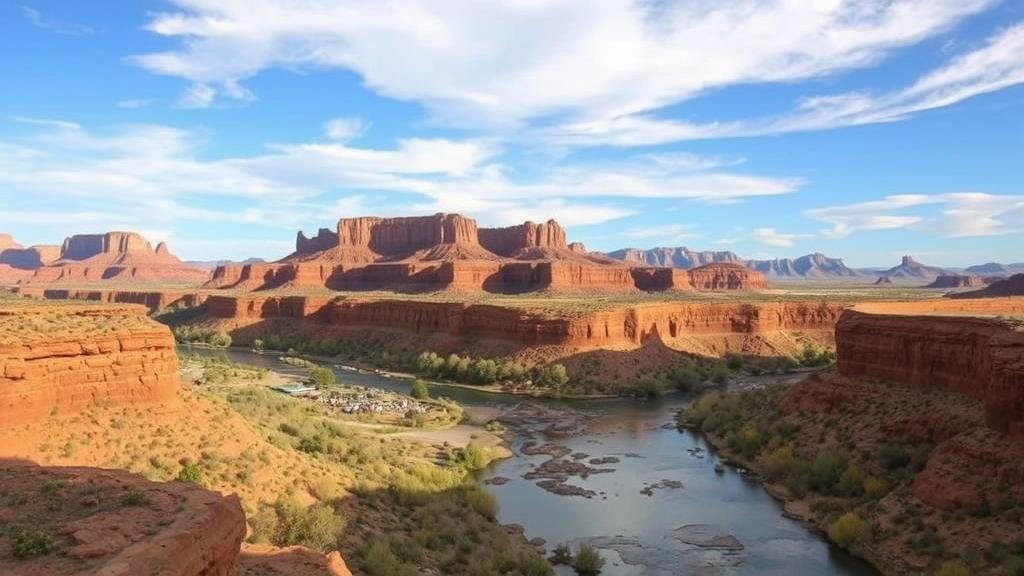How the Famous Gila River Placers of Arizona Were Discovered and Worked
The Discovery and Exploitation of the Famous Gila River Placers of Arizona
The Gila River placers in Arizona, renowned for their rich deposits of gold, hold a significant place in the history of American mining. The discovery and subsequent mining of these placers reflect not only the allure of gold but also the complexities involved in their extraction. This article provides a detailed examination of the factors leading to their discovery, the techniques employed for extraction, and the impact on local communities.
Historical Context
The discovery of gold in Arizona can be traced back to the mid-19th century during the California Gold Rush. As news of gold spread, prospectors ventured into new territories, including Arizona. The Gila River itself, flowing through southwestern Arizona, became a prime target for those seeking fortune.
In 1858, a number of prospectors lobbed their claim on these new territories, leading to the establishment of the first mining camps along the Gila River. Notably, the presence of established Native American communities and their historical ties to the land complicate the narrative of discovery, as these groups had been using the resources of the Gila River long before the arrival of European settlers.
Mining Techniques Employed
Once gold was discovered along the Gila River, various mining techniques were employed to extract the precious metal. e techniques evolved over time and were significantly influenced by the available technology and the geographical nature of the river.
Initially, prospectors relied on simple methods:
- Panning: This basic method involves using a shallow pan to wash away soil and gravel, allowing heavier gold particles to settle at the bottom.
- Rocking: Similar to panning, rocking utilized a rectangular box with a false bottom. As miners poured material into the box, they rocked it back and forth to separate gold from lighter materials.
As mining efforts intensified, more sophisticated techniques were introduced:
- Hydraulic Mining: This technique utilized high-pressure water jets to dislodge rock and soil. It was particularly effective in reaching deeper deposits that panning could not access.
- Dredging: Large, floating dredges began to appear during the late 19th century, mechanically scooping up riverbed material and separating gold on board.
Economic and Cultural Impact
The placer gold mining along the Gila River had profound economic implications for Arizona. Initially, the rush supplied a substantial influx of treasure-seekers, contributing to the economic development in the region. According to the U.S. Geological Survey, thousands of ounces of gold were extracted in the initial years, leading to the establishment of towns like Florence and Globe.
But, the mining activities also posed cultural and environmental challenges. miners’ interactions with Native American tribes often led to disputes over land and resources. Plus, hydraulic mining in particular caused extensive ecological damage along the river, disrupting local ecosystems.
Present-Day Relevance
Today, the legacy of Gila River placers serves as a case study in both the history of mining and the need for sustainable resource management. Modern mining practices are shaped by regulations intended to mitigate the environmental impact and foster better community relations.
The gold mined from the Gila River is now a part of Arizona’s historical narrative but also a reminder of the challenges that accompany resource extraction. Educational programs highlighting the historical significance and the ecological repercussions ensure that the lessons of the past are not forgotten.
Conclusion
The discovery and working of the Gila River placers reflect a complex interplay of ambition, technology, and environmental stewardship. By understanding this historical narrative, current and future generations can appreciate the delicate balance between pursuit of wealth and responsible resource management.
As we look towards the future, it becomes crucial to apply lessons learned from the past to ensure that natural resources are used wisely, preserving them for future generations while also acknowledging their historical significance.



